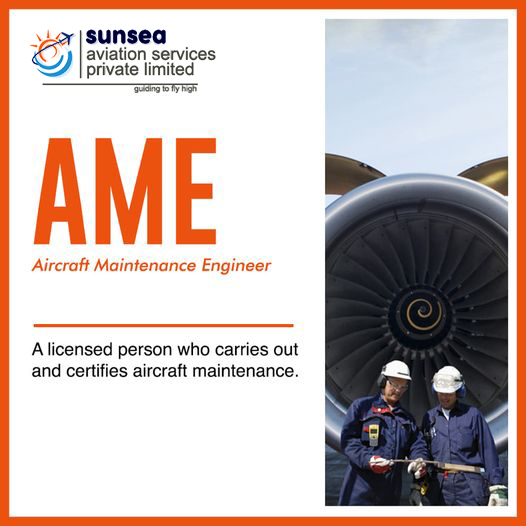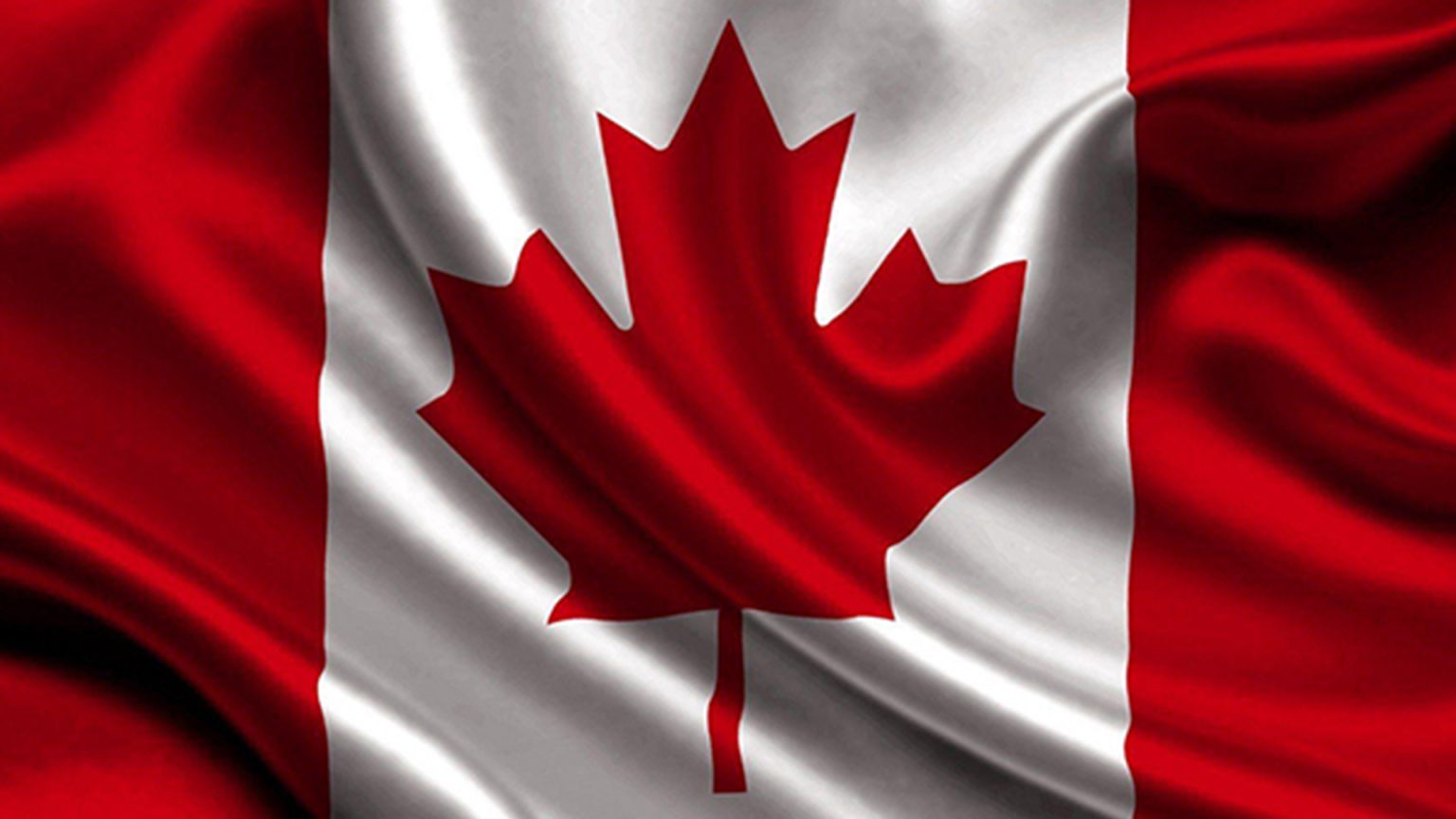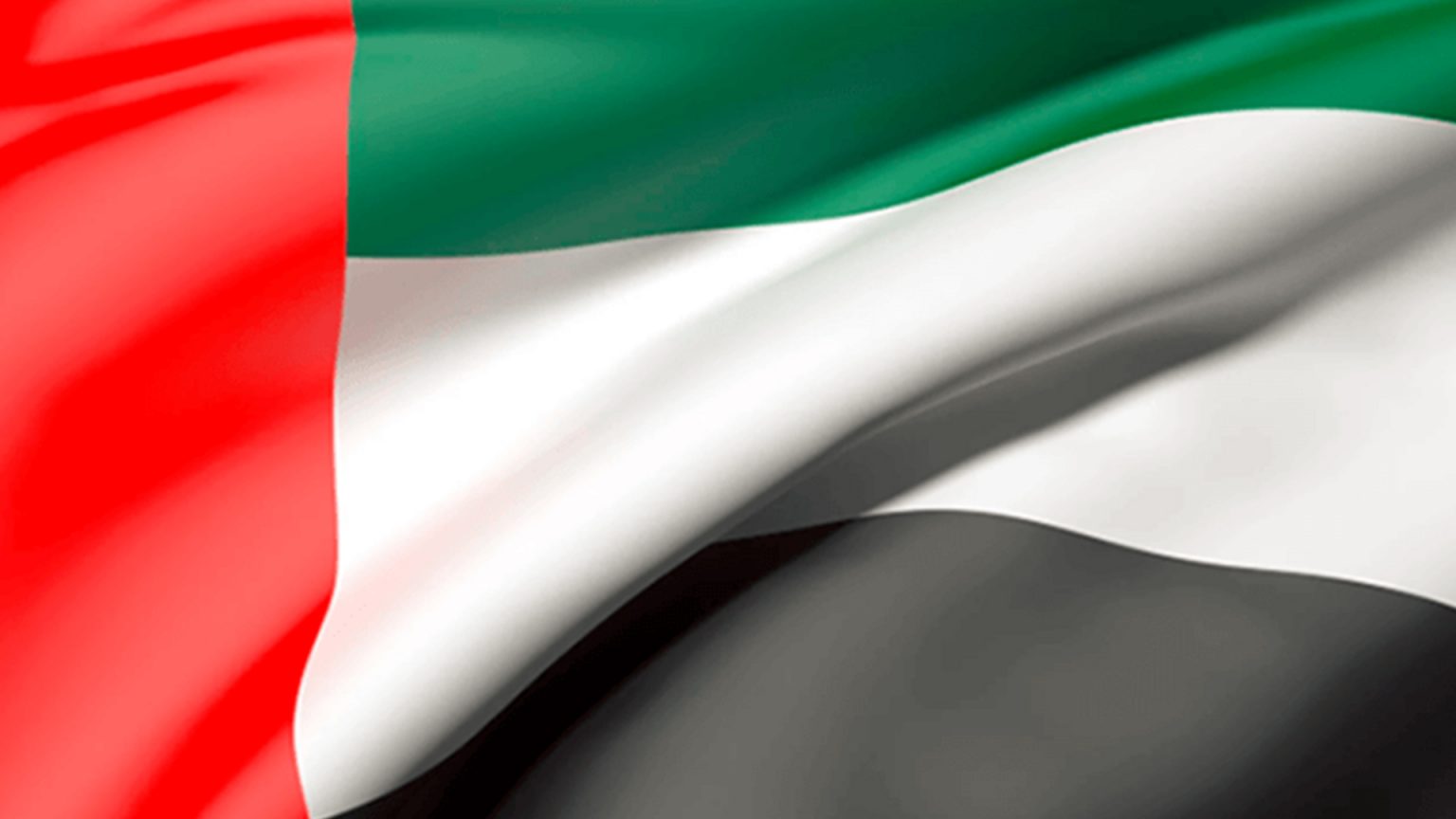Sunsea Aviation Services Private Limited
Aircraft Maintenance Engineering
INTRODUCTION
An aircraft maintenance engineer (AME) is a licensed person who carries out and certifies aircraft maintenance. This same title is used in a number of different countries, including Australia, Bangladesh, Canada, India and New Zealand.
A licensed aircraft maintenance engineer (L-AME) is an AME with an inspection authorization.
An AME is similar to, but has different national rules and procedures from, a US or European aircraft maintenance technician.
An aircraft maintenance engineer is responsible for ensuring an aircraft operates properly and safely. A maintenance engineer may make repairs, troubleshoot problems, conduct inspections and make upgrades to aircrafts.
Daily duties may include civil aviation inspections specified by the civil aviation authorities of the country, scheduled maintenance, emergency repairs and recordkeeping of all maintenance activities.

Highlight Countries
Importance & Basic Requirements
Aircraft maintenance engineers work with equipment that includes specialized aviation tools, diagnostic equipment, computers, x-ray machines and power tools. Work conditions may involve working on ladders or scaffolds, long hours working on emergency repairs and managing other maintenance staff. Maintenance engineers must carefully observe all the rules and regulations of the civil aviation authority when performing any job duty.
People entrust their lives to aircraft maintenance engineers in the hope that they are properly maintaining and repairing aircraft carriers. When we feel turbulence on a plane or anything that disrupts our general feelings of aircraft safety, we hope that everything on the plane is regularly maintained and in good working condition.
Aircraft maintenance engineers (AMEs) are responsible for routine maintenance on an aircraft, along with fixing any problems that arise. AMEs are licensed to inspect and certify that work done on aircraft complies with written safety standards.
They also work on preventative maintenance, as certain parts of an aircraft have a limited lifespan. Therefore, when airplane records suggest that a component be replaced, they quickly perform this replacement service so that problems will not occur in the future. AMEs service and repair various parts of an airplane, including airframes, engines, electrical and hydraulic systems, propellers, landing gear, brakes and aircraft instruments. They use special instruments to measure the wear and tear of parts and use x-ray machines to search for cracks undetectable to the human eye.
Aircraft maintenance engineers are responsible for keeping a log of all the repairs and work they do on an aircraft so that safety remains their biggest concern. Before a aircraft returns to the skies, an AME must ensure that all components work properly and safely. Therefore, they put the aircrafts through a number of standard tests, which consequently makes frequent fliers feel a lot safer about air travel.
AMEs may specialize in different types of aircraft, such as small aircrafts, helicopters, propeller-driven airplane and large, turbo transport aircraft carriers. Large aircraft are often quite sophisticated in that they may possess many electronic, electrical, pneumatic, hydraulic, mechanical and propulsion systems.
AMEs must be knowledgeable about aircraft equipment, including radio, radar and instruments, and electro-mechanical systems, including cabin pressure systems, oxygen equipment and altitude measuring instruments. They also need to know about approved repair techniques, safe work practices and aeronautical safety rules, regulations and methods. It is crucial that AMEs keep their skills up to date and remain aware of the latest technologies.
An Aircraft Maintenance Engineer is responsible for the airworthiness of an aircraft.
AME Responsibility
An aircraft maintenance engineer is liable for guaranteeing an aircraft works appropriately and securely. A maintenance engineer may cause fixes, to investigate issues, lead reviews and make moves up to aircraft. Day by day obligations may incorporate tracking and performing booked maintenance, making crisis fixes, or planning for Federal Aviation Administration (FAA) examinations.
An aircraft maintenance engineer works with specific flight and force devices, PCs, symptomatic hardware and x-beam machines. While working, the individual may ascend stepping stools or remain on frameworks, oversee other maintenance staff or spend extended periods on crisis fixes. Maintenance engineers should cautiously watch all FAA rules and guidelines when playing out any occupation obligation
About the course
Aircraft maintenance engineering is not a degree or a diploma course, but a training programme. On completion of the training, a licence is issued by the Directorate General of Civil Aviation (DGCA).
During the training, lessons are imparted for service and maintenance of aircraft so as to ensure flight safety. A three-year aircraft maintenance engineering licence training course is being offered by several institutes approved by the DGCA.
Those who have passed the Plus Two examinations with 50 per cent marks in aggregate in physics, chemistry and mathematics or a three-year diploma course in any branch of engineering or B.Sc. degree holders after Plus Two with mathematics, physics and chemistry are eligible for admission to AME training courses. There is no gender discrimination in admission. Boys and girls can seek admission. This training course in rigorous and only a few institutes offer training on heavy aircraft and jet engines.
The first year of AME training provides basic information about aircraft rules and regulations. In the second year, students learn general engineering and maintenance. The subjects taught include aerodynamics or theory of flight, metallurgy, electronics, handling sophisticated equipments and practical work in machine rooms and on aircraft engines. In the third year, the study focuses on specific areas like light aircraft, heavy aircraft, piston engines, jet engines or helicopters.
Apart from this, trainees are required to undergo structural aircraft type courses in mechanical or avionics stream. After successful completion of the training programme, the trainees will get a basic aircraft maintenance training certificate. This is followed by an examination conducted by the DGCA.
Those who qualify the examination will be awarded a licence. The three-year training is sufficient for a candidate to appear for the aircraft maintenance licensing examinations. After getting the DGCA- AME licence, one is required to obtain regulatory licence or approval on a type of aircraft. If it is an Airbus or Boeing, one has to obtain an individual licence to service that particular type of aircraft . Aircraft maintenance engineers are authorised to inspect the aircraft and certify its fitness.
AME programme usually has a duration of 3 years.
AME Eligibility
AME Eligibility Criteria
- Qualification: SSLC, HSLC +2 (PCM)
- Group: Mathematics,Physics,Chemistry
- Other Equivalent AICTE Approved: Diploma in 3yrs of Engineering ( any Stream),Higher qualification in science with PCM at the time of admission
- Minimum requirement: 45% in SSLC and HSLC +2(PCM) or Candidate Eligible for B.TECH
- Age Requirement: 16yrs to 18yrs
- Medical Requirement : No Colour blindness or any other disability
AME OJT
What is OJT or Industrial Training?
On Job Training or Industrial Training is to be given to AME students for a period of six months mostly in the last semester i.e VI. This training has to be obtained from the organization which is approved for maintenance work by the respective aviation authority of the country. The training has to be given as per the norms fixed by the authority. Students are sent to different organizations for a period of 6 months, the organizations may be airline companies or MROs.
The licensing method
To become a Licensed Aircraft Maintenance Engineer (LAME) you are required to meet the examination and experience requirements of Part 66 Aircraft Maintenance Personnel Licensing.
Licence for AME holders is issued after completion of 48 months of work in the aviation maintenance sector and after successfully completing the written examinations prescribed by the respective aviation authorities of the country.
It is termed as M Licence in Canada, EASA Licence in the Europe etc. as per the norms specified by International Civil Aviation Organization (ICAO)
AME Opportunities
Scope for AME overseas
Boeing, one of the world’s largest makers of commercial jetliners forecasts that 601,000 aircraft maintenance technicians will be needed over the next 20 years, with the greatest demand – 243,500 technicians – in the Asia-Pacific region and an estimated 92,500 new technicians in North America.
There is immense scope for Aircraft Maintenance Engineers overseas especially in countries like USA, Canada, UK, France, Germany, East European countries, South East Asian countries etc.
Aviation Industries worldwide have been on an expansion spree and the requirement of Aircraft Maintenance Engineers has catapulted as never before. Aviation experts have predicted that by the year 2020 the requirements of AMEs will be to the tune of around 20,000 in each of the countries mentioned above.
In 2013, aircraft mechanics and service technicians earned an annual median salary of $55,980, according to the U.S. Bureau of Labor Statistics (BLS). The BLS also projected slower than average employment growth of 2%, for aircraft and avionics equipment mechanics and technicians, from 2012-2022. The U.S. Bureau of Labor Statistics (BLS) predicted that all maintenance workers can expect to see job opportunities increase about as fast as all other occupations between 2012 and 2022.
Scope for AME in India
World-wide, the business of aircraft maintenance is enormous, and is set to expand. The approximate number of aeroplanes currently in service world-wide is around 500,000 passenger and cargo aircraft and about four million smaller private aircraft used for business or pleasure.
India is one of the fastest developing countries in the world. Due to the liberalisation policies of the government, there is tremendous growth in civil aviation. Many private airlines and corporations viz., Air India, Indian Airlines, Jet Airways, Indigo, Air Asia etc. are operating today with very good operating revenues.
To meet the growing need of the passenger airlines, cargo aircrafts, private air taxi operators, business and corporate jets, there exists an urgent need for aircraft maintenance engineers.
Those who successfully complete the training and obtain DGCA’s licence are eligible to get jobs in airports and aircraft manufacturing or maintenance firms with an attractive salary.
As more and more airlines start operations in the private sector, the demand for aircraft maintenance engineers and mechanics has reached a point of no return and hence opting to pursue AME opens up plenty of lucrative career opportunities in India..
The aviation industry has two main branches: flying branch and maintenance branch. While pilots fly the aircraft, aircraft maintenance engineers are concerned with the maintenance of the aircraft. An aircraft maintenance engineer has to obtain a licence from the Directorate General of Civil Aviation (DGCA).
The average salary for an Aircraft Maintenance Engineer (AME) is Rs 956,701 per year.
Advantages of AME Abroad
Advantage of pursuing AME overseas
The specific advantage of pursuing AME abroad is that the students are given practical training in aircraft which are airworthy and are of the latest standards.
Optimum emphasis is given to practical aspects of the course along with the theoretical aspects. The students get firsthand experience in learning the techniques of maintenance and overhaul during their study period inactive hangers with the latest and advanced aircraft which are live and airworthy. This is the most important advantage a student gets while pursuing AME abroad.
AMEs may progress to supervisory positions or aircraft inspector, as well as obtaining further endorsements to their AME license that allows them to inspect and certify a broader range of aircraft or aircraft systems. AME licenses are issued in the following categories:
M – Aircraft
E – Avionics Systems (electronic systems)
S- Structures
B – Balloons
Pursuing AME in Canada especially has the following features and advantages:
- 15 month Diploma program
- Transport Canada approved for AME “M” licence basic training
- 50/50 theory and practical instruction
- 9 complete training aircraft from single engine to large jet
- 19 month experience credit towards AME “M” licence
Options for Indian AME
Lateral Entry for AME holders
For those students who already completed AME in recognized institutions in India, a Lateral Entry into the 2nd or 3rd year of B.Eng. (Aircraft Systems) is offered in institutions of repute abroad. This is an advantage to the students who may then take up one more year of study and get B.Eng. (Hons) in Aerospace Engineering. During the course of their studies, they can also take up examinations in different papers for clearing EASA at these institutions which are authorized EASA centres and the exams fees are also lower.
Sunsea's Role in AME
The role of Sunsea starts from the time the student contemplates on embarking on a study path in Aircraft Maintenance Engineering Abroad.
Counseling the student, identifying the right institution in the right country to suit the credentials and aspirations of the student, facilitating the admission, documentation and visa processes till the time the student reaches his destination country and the institution are the more apparent roles played by Sunsea with elan and finesse.
Have you asked for what reason do you need us? How we can help you in preparing yourself better for a promising profession. In the event that you are asking why these impactful inquiries are raised here, there is an exceptionally basic explanation behind it. Nobody had responded to these inquiries before to the understudy network.
Understudies have fallen into a propensity to request guidance from us without understanding what more would we be able to accomplish for you? This is just in light of the fact that nobody has endeavored to characterize their function in your understudy life and how we can coach you to settle on better vocation choices.
Who right?
- We are a group, who has abundant information on different training and vocation openings.
- We give arrangements by recognizing understudy needs. We will assist you with tweaking and plan your Lord vocation plan.
- We are licensed to give the correct instruction arrangements by the expert relationship inside the training business.
- They will participate in measures to boost instructive results to guarantee understudy achievement.
What would we be able to accomplish for understudies?
- We loan a dream for understudies who are holding any expectations of concentrating abroad in faraway places by being the scaffold among understudies and their instruction objective.
- We can clarify the social distinction that a worldwide understudy would generally expect and set them up better for the experience.
- With innumerable information about vocation openings and instruction pathways accessible for l understudies, We can assist you with settling on an educated choice and help address your desires.
We can help understudies in other pragmatic things like setting aside cash (by helping understudies profit for grants and bursaries), social presentation (by sorting out city visits), planning to concentrate abroad (by masterminding pre-flight and post-appearance direction meetings) and give a cut of worldwide understudy life (by arranging college study visits).
How might we help you during crisis circumstances?
Since we manage understudies at all times, as understudy gatekeepers when an understudy is in an altogether new nation. We can help set aside the concerns of guardians whose kid is concentrating abroad by being a crisis contact under unforeseen circumstances like infection, flight crossing out and so forth.
We can essentially help understudies by teaching them about what is the best activity with regards to scholarly crises, for example,
- How to profit for additional assistance when you are falling behind as far as course progress?
- What can do when your enrolment gets dropped because of unanticipated reasons?
What kind of methods a global understudy needs to follow if there is a crisis circumstance that propels them to return back to their nation of origin incidentally
How might they manage understudies towards the correct way when a specific cutoff time is past., in the event of visa recharging date or a course admission date.
How might we help understudies explicitly for visa related issues?
Visa matters can prompt convoluted life circumstances if an understudy isn’t guided effectively. It is an essential warning job where the correct group like us can guarantee that your understudy life is without inconvenience with no dark dab on your movement history.
We can help you explicitly to,
- Comprehend and help meet rules’ for the award of a fruitful understudy visa
- Help decipher the conditions put on your visa and how to tail them tenaciously
Sunsea’s Services
Sunsea supports the endeavour of student in a variety of constructive ways.
- Expert counseling to identify the suitability of the student for the course, institution and country depending on their aspiration and talents, both innate and learned
- Undertaking eligibility checks and relevant documentation pertaining to application
- Facilitating the receipt of admission/offer/ acceptance letter from the institution
- Taking care of the process of admission with documentation and submission
- Offering effective guidance in terms of availing loan facilities from banks/ financial institutions
- Guidance on the visa process
- Preparation of visa documents
- Submission of visa
- Pre Departure briefing to the student
- Arranging airport pickup at the destination
- Assistance in finding suitable accommodation at the place of study









